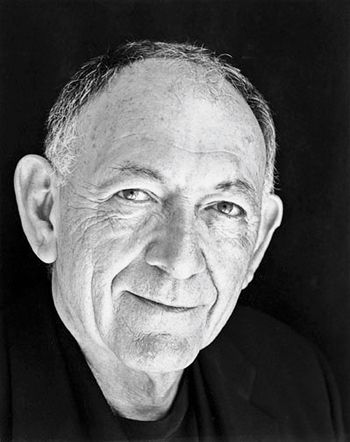Q&A: Kermit Lynch
International wine legend answers OWP

Kermit Lynch was raised in San Luis Obispo, California, but his name has become synonymous with French and Italian wines. In 1972, with a $5,000 loan, this writer/musician opened Kermit Lynch Wine Merchant in Berkeley, with 35 cases stacked on the floor. Inspired by Old World wines, Lynch became a retailer, distributor and national importer for “authentic wines that express their terroir.” His focus on small, artisan producers has won him two James Beard awards, and he was knighted by France with its prestigious “Legion d’Honneur.” In 1998, he purchased the historic Domaine Les Pallières in Gigondas with his friends, the Brunier brothers of Domaine du Vieux Télégraphe. In addition to writing three books — “Adventures on the Wine Route” (1988), “Inspiring Thirst” (2004), and a 25th-anniversary edition of “Adventures on the Wine Route” (2013) — he has recorded four albums centered on his passion for roots music. Lynch and his wife, photographer Gail Skoff, divide their time between Berkeley and Provence, France.
What’s the most significant change in the import business over the last 20 years?
KL: It is difficult to weigh each change and say one is most important. The rise of the sommelier is nice to see. The rise of so-called natural wines. The sheer quantity of wine importers in the U.S. right now — when I began, I had almost no competition, and in the funky cellars I was partial to, the winemakers had never seen an importer from anywhere. And finally, the fact that the market is no longer dominated by Robert Parker’s palate, that’s huge.
How has French culture influenced your life?
KL: I’m California-born, but did not have a taste of wine until I was sixteen. My mother did not like to cook. Her specialty, by the way, was creamed tuna and green peas on toasted white bread, served with a glass of milk. When frozen TV dinners were invented — take ’em out of the freezer and stick ’em in the oven — my mother thought they were God’s greatest gift to women. So I would suppose that making wine and food such an important part of each day in my life came from my experiences in France.
I like to cook and have graduated from frying Spam in my college days to more complicated creations as the years go by. Not that I make complicated creations, no, but they are more complicated than fried Spam. I’ve spent a lot of time with excellent cooks. Let me drop some names. Some have restaurants, but I’m speaking of their home cooking. Alice Waters, of course, who lives just a few blocks away here in Berkeley. And my great friend and mentor, Richard Olney, whom I miss terribly. We had so many great meals and great bottles out of his stone cellar, so many late nights discussing food and wine. Lulu Peyraud from Domaine Tempier. Gerard Chave from Domaine Jean-Louis Chave. Gerard is a great cook. One of the best meals of my life was with Robert Parker and Boz Scaggs at Chave’s home. Beverages included a 1929 Hermitage blanc. It wasn’t blanc though, but sort of light apricot-skin, the reddish hue, the way I remember it. Nectar! I remember the menu: Home-cured anchovies, Omble Chevaliers, a rare white trout-like fish from the depths of Lake Annecy, lamb balls — and no, not like meatballs — and we finished with veal kidneys and wild mushrooms, cheeses and dessert. Maggie Brunier from Vieux Télégraphe cooked classic Provençal cuisine to go with her husband’s grandiose Châteauneuf-du-Papes. Marcel Lapierre and his wife were party animals, and world records were broken during their feasts. For example, how many bottles uncorked in one evening? Maybe I somewhat veered away from culture, but the French wine and food culture is FUN.
You are stranded on an island. Choose one winemaker and one chef to keep you well-hydrated and well-fed. Why did you choose them?
KL: I suppose I would have to pick Lulu Peyraud as chef because she’s such a great cook and a blast to be with. When together, we spend a lot of time trying to make one other laugh, and a good laugh would be valuable on a desert island. For the vigneron, sorry, I have too many good friends over there who make great wine. Selecting one wouldn’t be possible. So I’ll name my old friend, Joseph Swan, who made wine up near Forestville in California. He made Zinfandels that were a match for almost any other wine in the world, and how did Joe Swan manage to do that? As Bruce Neyers once told me, “Everyone in the wine business would like to know the answer to that one.”
Any new projects (wine, music, books) on the horizon?
KL: I’ve been writing fiction lately and working on two books: “At Poupon’s Table” is a novel filled with food and wine; “Tales from the San Joaquin” is a novella with some short stories.
Currently, which do you enjoy more: writing or playing music? Why?
KL: Not sure why, but fiction attracts me more than music making or wine writing nowadays. Why be limited and always have to tell what really happened? I suppose it is something like that. The pleasure of letting my imagination run away with me. But fiction writing is quite solitary compared to a Nashville studio creating songs with outstanding musicians behind me. There has always been a Kermit-the-hermit side to me, and it gets stronger as I get older.









